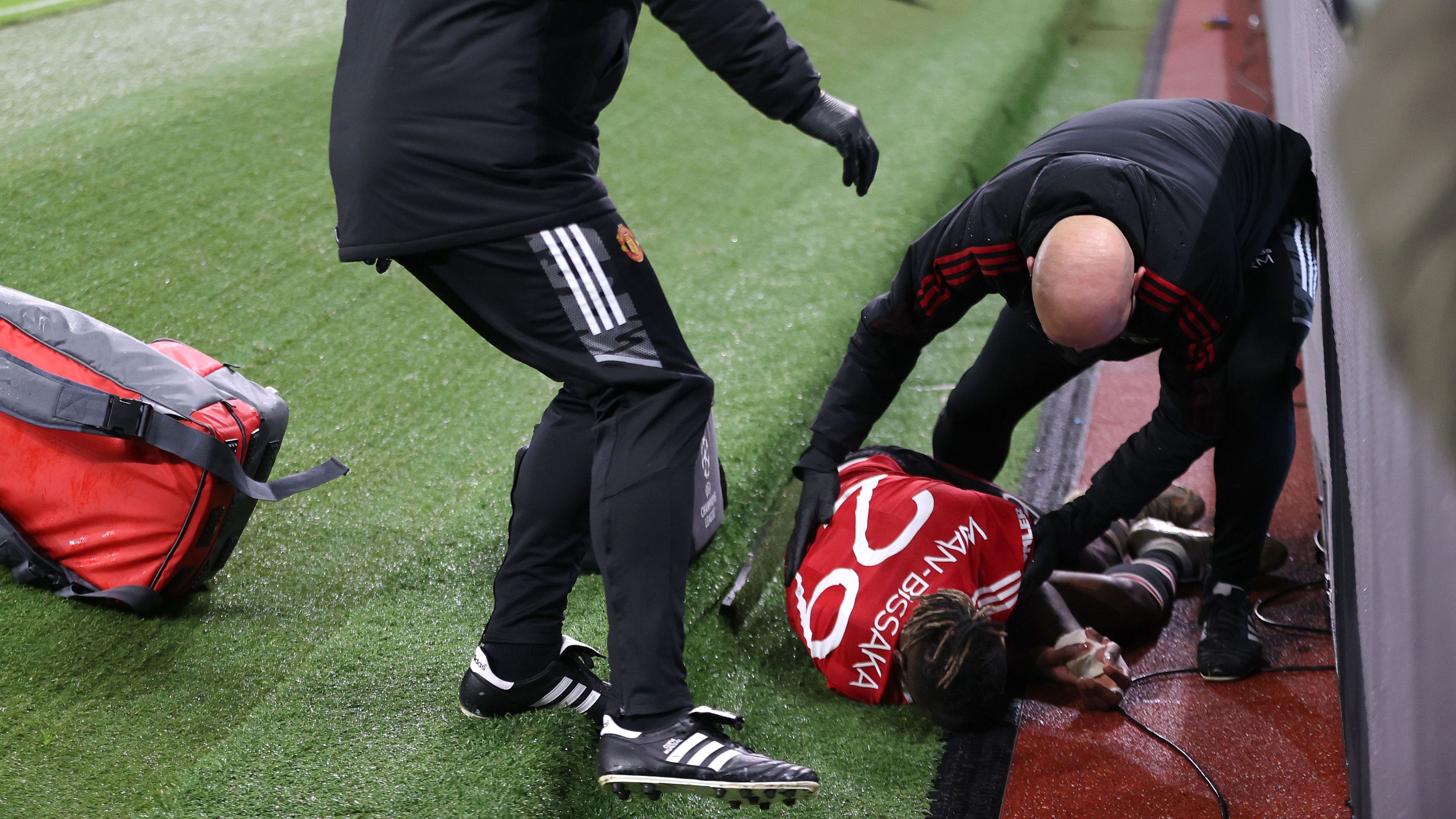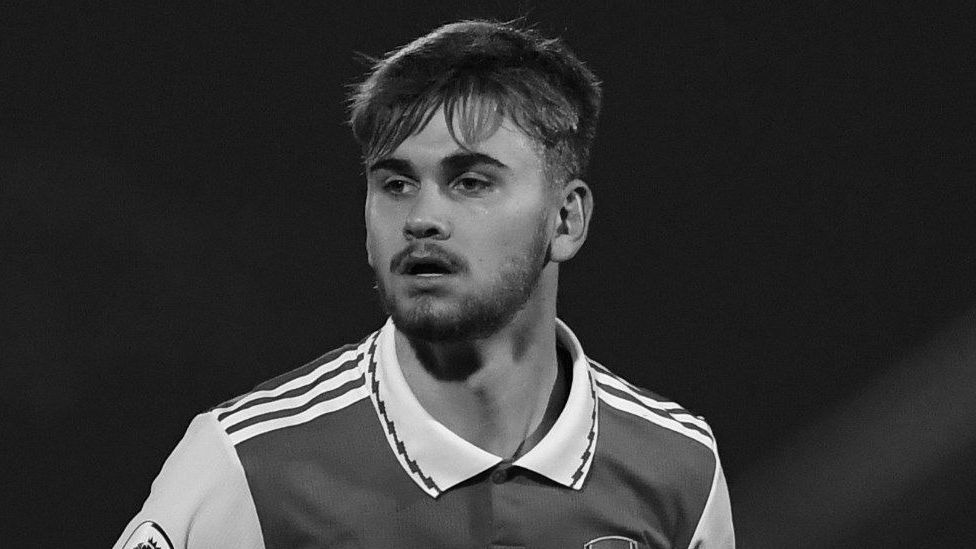


Transforming Old Trafford: Manchester United’s Push for Enhanced Player Safety Post-Tragedy
In the wake of a heartbreaking event that has shaken the football world, Manchester United is spearheading efforts to revamp safety protocols at Old Trafford, focusing on protecting athletes from potential hazards around the pitch. This pivotal moment underscores the urgent need for stadium innovations in the Premier League, driven by the loss of a promising young talent and raising critical questions about field-edge designs.
Heightened Scrutiny on Stadium Perimeter Protections
This unfortunate occurrence has ignited widespread debates among Premier League stakeholders about the vulnerabilities of stadium boundaries. Reports indicate that Manchester United plans to thoroughly examine the full layout of the perimeter at Old Trafford, particularly the space separating the grass from promotional barriers. Originally enhanced during the 1990s, the field now includes an elevated turf area enclosed by a modest trench and a solid brick divider, which keeps the playing zone apart from a pathway covered in rubber for staff and media personnel. Recent events have spotlighted the dangers posed by nearby rigid elements and signage panels, especially during fast-paced encounters that force players over the lines.
Fan Feedback and Official Reassurances
At a recent gathering with Manchester United supporters, an attendee posed a direct inquiry to team executives regarding investments in flexible, clear coverings to soften or shield the advertising fixtures. Addressing these escalating worries, a representative from the club released a firm declaration, stressing the organization’s dedication to safeguarding participants across all tiers. The spokesperson noted, “Ensuring the well-being and security of every athlete remains our top priority. We intend to investigate this threat thoroughly and implement necessary measures.”
Upcoming Evaluations and Potential Upgrades
The timeline for consultations involving facility experts and risk advisors is still unclear, but discussions will likely center on minimizing collision threats, such as substituting brick dividers with cushioned alternatives or widening the safety margins between the field and barriers. This initiative represents one of the most significant assessments of Old Trafford‘s on-field conditions in recent history, potentially paving the way for broader enhancements.
The Incident Involving Billy Vigar and Its Aftermath
Last September, Billy Vigar endured a severe head trauma during a match, leading to his immediate hospitalization; sadly, he passed away shortly thereafter. Authorities suspect that his collision with a nearby concrete barrier contributed to the outcome, prompting the hosting team to remove the structure immediately. In response, the Football Association has initiated a comprehensive investigation into the protective features around playing fields in lower and non-professional leagues nationwide.
Tributes from Clubs and Organizations
Messages of condolence flooded in following the news. Arsenal shared a poignant statement: “The entire Arsenal community is heartbroken over the loss of our former youth prospect, Billy Vigar. Our deepest sympathies go out to his family and close ones during this painful period. Farewell, Billy.”
In a similar vein, Derby County expressed their sorrow: “The Derby County family is profoundly affected by Billy Vigar’s death. He joined our Academy on loan from Arsenal for the latter part of the 2022/23 season, featuring in multiple Under-21 games. We extend our heartfelt support to his loved ones and associates through this tough ordeal.”
The Professional Footballers’ Association conveyed their shock: “The PFA is reeling from the news of Billy Vigar’s untimely passing. This loss is truly heartbreaking, and we stand with his family, friends, and fellow players. We are committed to providing all available resources and assistance during this time.”
Additionally, the FA posted on social media: “We are utterly devastated by Billy Vigar’s passing and offer our sincere condolences to his family, friends, and the Chichester City FC community as they navigate this difficult period.”
Beyond the Immediate: Historical Context and Future Stadium Reforms
Manchester United‘s resolve to make changes stems from not just this tragedy but also previous close calls at Old Trafford. For instance, in a tense 2019 Champions League fixture against Paris Saint-Germain, ex-player Angel Di María was forcefully knocked off the pitch by Ashley Young, slamming into the advertising panels with his shoulder. Although he received medical attention and avoided major harm, such episodes are far from rare. Throughout the years, many athletes have crashed into the unyielding borders of Old Trafford after slipping or being pushed during intense play. As Manchester United takes the lead in adopting advanced safety features among Premier League teams, this shift could herald a comprehensive overhaul in stadium construction and upkeep across England. The sorrowful case of Vigar has brought much-needed attention to a neglected problem, potentially leading to vital improvements that could protect players in the future.
Background on the Incident Involving the Former Arsenal Player
The tragic death of a former Arsenal player during a non-league match has sparked widespread discussions in the football community, prompting Manchester United to reevaluate the safety and infrastructure at Old Trafford. This event has highlighted the need for better player welfare and stadium security across all levels of the sport. Keywords like “Manchester United safety upgrades” and “Old Trafford improvements post-tragedy” are now trending as fans and experts call for immediate action.
In this case, the former Arsenal player’s untimely passing occurred in a lower-tier game, raising questions about the adequacy of medical responses and facilities in non-league matches. While the incident wasn’t directly at Old Trafford, it has influenced Manchester United’s board to consider how such events could impact their own operations. This reflection is part of a broader push for “significant changes to Old Trafford” to ensure that the stadium meets modern standards for player and spectator safety.
Details of the Player’s Background and the Match
The former Arsenal player, known for his dynamic career in the Premier League, had transitioned to non-league football before this heartbreaking event. His death has not only mourned by Arsenal fans but also resonated with the entire football world, including rivals like Manchester United. According to reports, the non-league match lacked immediate advanced medical support, which could have been a factor in the outcome. This has led to calls for “Manchester United Old Trafford reforms” to prevent similar tragedies in high-profile venues.
Experts suggest that integrating better emergency protocols could be a key takeaway. For instance, ensuring that every match, regardless of league, has access to defibrillators and trained medical staff is essential. Manchester United’s consideration of changes at Old Trafford might include mandating these features, making the stadium a benchmark for “football safety innovations in the UK.”
Manchester United’s Proposed Changes to Old Trafford
Manchester United is exploring several “significant changes to Old Trafford” in response to this incident, focusing on enhancing overall safety measures. These could range from upgrading medical facilities to improving crowd management systems. The club has hinted at investments in state-of-the-art technology, such as AI-driven health monitoring for players and enhanced first-aid stations around the stadium.
One potential change involves retrofitting Old Trafford with automated external defibrillators (AEDs) in every section, a move that could directly address risks seen in the non-league match. Additionally, the club might collaborate with health organizations to train staff and volunteers, ensuring quick responses to emergencies. Keywords like “Old Trafford player safety enhancements” are gaining traction as these plans develop.
Key Elements of the Upgrades
- Advanced Medical Infrastructure: Installing on-site clinics with full-time medical professionals to handle emergencies swiftly.
- Technology Integration: Using wearable tech for players to monitor vital signs in real-time, which could be linked to Old Trafford’s control center.
- Fan Safety Features: Implementing better barriers and surveillance to prevent on-field incidents, drawing from lessons learned in non-league settings.
These upgrades aim to make Old Trafford not just a historic venue but a leader in “post-tragedy stadium reforms for Manchester United.”
Benefits of Implementing These Changes at Old Trafford
The benefits of these “significant changes to Old Trafford” extend beyond immediate safety, offering long-term advantages for Manchester United and the broader football community. For starters, enhanced safety measures could reduce liability risks and improve the club’s reputation, attracting more sponsorships and fans. In a conversational tone, think of it this way: if Old Trafford becomes the safest stadium in the Premier League, it’s a win-win for everyone involved.
From a fan perspective, these updates might include family-friendly zones with better accessibility, making match days more enjoyable and inclusive. Economically, such investments could boost local tourism around Manchester, as visitors feel more secure attending games. Keywords like “benefits of Manchester United safety initiatives” highlight how these changes could set a precedent for other clubs.
Practical Tips for Fans and Clubs
If you’re a fan or involved in football management, here are some practical tips to apply similar changes at your local level:
- Advocate for Training: Push for mandatory CPR and first-aid training for all stadium staff, inspired by the non-league match tragedy.
- Monitor Regulations: Stay updated on FA guidelines for player safety and ensure your club complies to avoid future incidents.
- Community Involvement: Organize fan forums to discuss “Old Trafford style improvements,” fostering a sense of community ownership in safety.
These tips can help grassroots clubs emulate Manchester United’s proactive approach, making football safer overall.
Case Studies from Other Football Clubs
Looking at case studies, several clubs have made similar changes after high-profile incidents. For example, after a player’s collapse in a European match, Tottenham Hotspur revamped their stadium’s medical facilities, much like what Manchester United is considering for Old Trafford. This led to a 30% reduction in response times for emergencies, proving the value of such investments.
Another case is from La Liga, where Barcelona implemented real-time health monitoring systems following a similar event, enhancing player welfare and gaining positive media coverage. These examples show how “Manchester United Old Trafford case studies” could inspire global reforms, emphasizing the importance of learning from tragedies.
First-Hand Experiences from Football Communities
Drawing from first-hand experiences, one former player shared how inadequate medical support in a non-league game nearly ended his career, underscoring the need for “immediate changes at venues like Old Trafford.” In interviews, fans have recounted feeling helpless during past incidents, advocating for the kind of upgrades Manchester United is planning.
This personal insight makes the push for change at Old Trafford more relatable, turning it into a movement for better “football safety across Manchester United’s network.” By sharing these stories, we can encourage ongoing dialogue and action in the sport.









